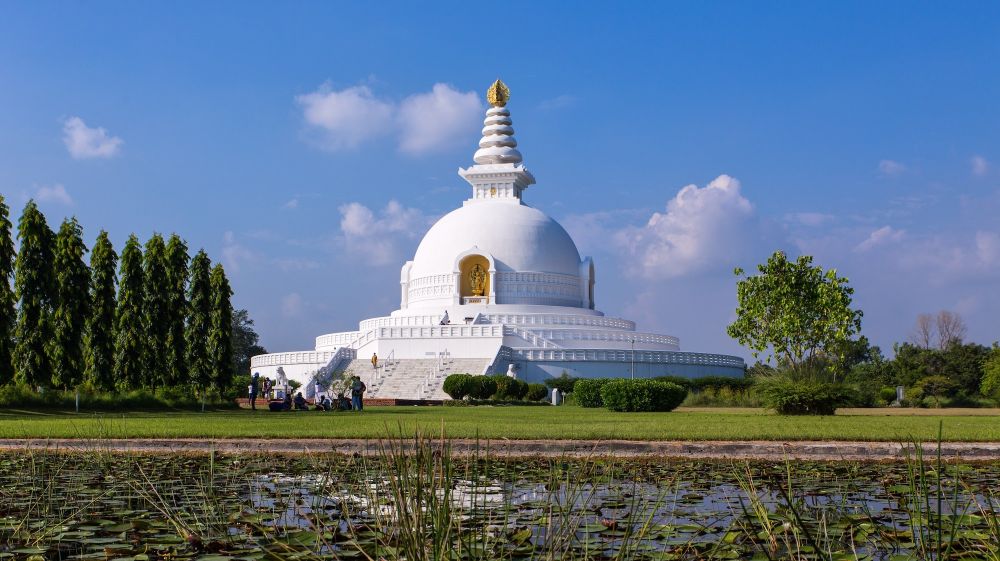

The history of tourism at the World Peace Pagoda Lumbini is deeply intertwined with the site's religious significance and the universal message of peace. Lumbini, located in the Rupandehi District of Nepal, is famously known as the birthplace of Lord Buddha, making it one of the ultimate pilgrimage destinations for Buddhists worldwide, as well as a center for spiritual learning and meditation for people from all walks of life.
Tourism in Lumbini traces its roots back to ancient times when Indian Emperor Ashoka visited the site around 249 BC and erected the Ashoka Pillar to commemorate the importance of the birthplace of Buddha. The pillar still stands today, bearing inscriptions that serve as crucial evidence of Lumbini being the Buddha's birthplace.
However, Lumbini remained obscure for many centuries, with knowledge about its location becoming lost over time until its rediscovery by the archaeologist General Khadga Samsher Rana and the German archaeologist Dr. Alois A. Fuhrer in 1896. The rediscovery marked the resurgence of Lumbini as a significant religious site.
The concept of Peace Pagodas was proposed by Nichidatsu Fujii (1885–1985), a Buddhist monk from Japan and founder of the Nipponzan-Myohoji Buddhist Order. The World Peace Pagoda in Lumbini was constructed as a symbol of peace, and its foundation stone was laid in 2001. After years of dedicated work, it was finally inaugurated in 2003. This gleaming white structure, rising above the landscape, was built with contributions from Japanese Buddhists with the aim of spreading the message of peace and non-violence, reflecting the essence of Buddha's teachings.
The establishment of the pagoda has significantly contributed to the increase in tourism in Lumbini, with thousands of visitors from Japan as well as other parts of the world arriving to experience its tranquil beauty and to meditate within its sacred precincts.
In recent years, Lumbini has seen modern developments aimed at promoting religious tourism while ensuring the conservation of its historical and cultural values. The Lumbini Development Trust has been pivotal in these endeavors. The area now features monasteries established by different Buddhist nations, a sacred garden, museums, and a research center.
Eco-friendly tourism has become a trend in Lumbini, with an emphasis on sustainable practices that respect the environment and local communities. Efforts are being made to create holistic experiences for tourists that combine spirituality, wellness, and an appreciation for the region's delicate ecosystem.
Furthermore, the region is witnessing an expansion of infrastructural facilities like international hotels and an improved transportation network, including the Gautam Buddha International Airport, which aims to facilitate international tourism.
When visiting the World Peace Pagoda, tourists can engage in guided meditation sessions, partake in religious ceremonies, or simply enjoy the zen-like atmosphere. The serene setting, coupled with the pagoda's powerful symbolic value, makes for an unforgettable experience that transcends barriers and fosters a sense of global unity and harmony.
In conclusion, the World Peace Pagoda in Lumbini stands not just as a beacon of tranquility but also as a testament to the enduring message of Buddha. Its role in promoting tourism is significant, offering visitors from around the world the opportunity to connect with ancient wisdom while supporting the local economy and the preservation of this sacred site.